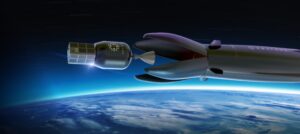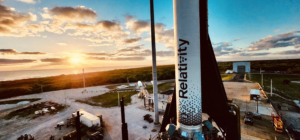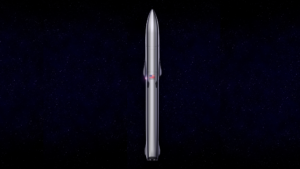
ULA Is Trying To Make Vulcan Partially Reusable!
Nowadays, more and more rocket companies are moving toward reusability. Whether this is partial or full, practically all next-generation launch vehicles have some sort of reuse plan to help with cost and launch cadence. Vulcan however, which just launched for the first time last month, is somewhat unique in that it’s a brand-new fully expendable rocket.
While its launch was successful, it was the first and only launch of that specific upper stage, first stage, two BE-4 engines, etc. In other words, all that hardware despite its build quality was used once and now is done. This being said, ULA has plans to alter the vehicle and even reuse the two BE-4 engines in future launches. Here I will go more in-depth into the company’s plan, the reuse benefits, Vulcan’s future, and more.
Vulcan Reusability

For a while now, ULA CEO Tory Bruno has expressed his opinion on reusability and whether or not it’s worth it. For example, he has mentioned that upper stages that are reused should do so in space. This being said, booster reuse, and specifically the Vulcan engine section is something he has been adamant about.
Just over a week ago during a presentation at SpaceCom 2024, he talked about Vulcan upgrades and the importance of not wasting the two BE-4 engines on each launch. This included graphics showing the future plans for the vehicle.
As far as how they plan to upgrade the vehicle, ULA has been working on a solution. At its core, recovery of hardware from space requires atmospheric reentry, deceleration, and landing. Reentry can be accomplished either by retro-propulsion, or by utilizing the atmosphere to decelerate the object via aerodynamic drag. Atmospheric deceleration at reentry velocities requires an aeroshell featuring a thermal protection system (TPS) to protect the payload. The aeroshell has historically been limited in diameter and area by the launch vehicle shroud. However, ULA has been focused on an emerging technology named HIAD, which stands for hypersonic inflatable aerodynamic decelerator, an inflatable structure with flexible TPS.
In terms of a future Vulcan mission profile, after separation, the nose assembly extends to position the HIAD such that it will clear the separation plane when inflated. Preliminary results indicate a 10- 12 meter HIAD will be required to recover the booster module. From here, it would continue through Earth’s atmosphere before parachute deployment. This would slow down the two BE-4s and additional technology significantly before a planned soft water landing. Here they would float on an inflatable aeroshell before being recovered by ULA and taken back to land for refurbishment.
In regard to this approach, Tory Bruno commented that after a landing, assuming it was successful, the initial engines would likely return to the factory for a full check out. Later on, they intend to inspect and reinstall them at the Cape. He also pointed out that making sure the two engines weren’t exposed to salt water would be very important. In a quote, he said, “The key is to not get them wet. Fortunately, the exit plane of the bells sits over 20 feet above the water. Also developing options for spray shields.”
Late last year Tory showed off a few videos of full-scale test articles in the ocean. These very clearly demonstrate what the company is hoping to achieve. With work actively being done, the question becomes when will they actually implement this tech onto Vulcan. In another quote, Tory said, “In terms of our engine recovery, that is going to happen within a handful of years. I don’t want to say exactly when because it’s part of the contract we have with one of our customers at this time, and we’re not releasing the details of that. But it will take a couple of years to actually be reusing the engine.” Based on all this information, and the fact that this quote was from years ago, we can expect Vulcan to be fully expendable likely up until around 2025 or 2026.
When asked about the economics of this recovery plan, Tory Bruno responded, “Breakeven in 2 to 3 flights fast” In addition, in April 2021 CEO Tory Bruno said that the additional launches purchased by Amazon for the Kuiper satellite constellation would require a higher launch cadence and that this provided support for the business case to go forward with the reuse concept. This specific large launch contract combined with a few others has ULA planning to launch Vulcan a few times a month. All reasons to support at least partial reusability.
Why Just The Engine Section?

ULA made a deal with Blue Origin to purchase the company’s BE-4 engines for Vulcan. At the moment with Vulcan expendable, each mission means two more engines bought. It also means two more engines that Blue Origin needs to produce and provide in a timely manner.
Beyond this, it would make quite a lot of sense for ULA to at least try to reuse these engines. Importantly, BE-4 is not only meant for Vulcan but primarily New Glenn, a reusable vehicle. Because of this, Blue Origin designed the engine for reuse proposes. This means running the engine at a reasonable level to put less stress on it. Blue Origin specifically says, “BE-4 was designed from the beginning to be a medium-performing version of a high-performance architecture. It’s a conscious design choice made to lower development risk while meeting performance, schedule, and reusability requirements.” In other words, they are making this engine to be reused. ULA could benefit from this design choice if they start bringing them back.
Another reason has to do with BE-4 production and Vulcan’s cadence. Tory Bruno has said, “We have to ramp up, before the end of 2025 we expect to be really at a tempo, which is flying a couple of times a month, every two weeks.” To add to this, Vulcan has 38+ secured launches with this vehicle alone. A good portion of which will happen within the next few years. Every launch means two more BE-4 engines are needed. It’s possible the total 38 launches require 76 BE-4 engines. Even in the next few months, we are expecting another Vulcan launch. Something expected to only increase over time. This is putting a lot of pressure on Blue Origin and their engine production.
In just the last month alone, we have seen both New Glenn flight hardware and the first launch of ULA’s Vulcan. Both vehicles require the engine on their first stage, 7 for New Glenn and 2 for Vulcan. For New Glenn, not only has flight hardware been spotted but the company has confirmed they are planning the first flight of the vehicle late this year. Besides the 7 engines needed for that first test article, it also means the beginning of a consistent BE-4 engine demand from New Glenn. Even though the vehicle is reusable and in theory should only need 7 engines for each booster, it still is going to add up. For one, it’s very possible that on initial flights the booster fails to land and the hardware is lost. On the other hand, even if each launch is perfect, they will be making quite a few boosters which each require 7 more engines.
Ideally, Vulcan could minimize its reliance on Blue Origin and begin refurbishing engines which is a much faster process. It also helps with reducing overall costs and improving launch cadence.
In the almost 8 years that ULA has been planning to reuse Vulcan’s engines, quite a lot of changes have been made to the recovery process. Not long ago ULA CEO Tory Bruno tweeted saying, “At the moment, component reuse (SMART) is the most economically clear return to factory approach. Upper stages that are reused should do so in space” ULA estimated this technology would reduce the cost of the first stage propulsion by 90%, and 65% of the total first-stage cost. By 2020, ULA had not announced firm plans to fund, build and test this engine-reuse concept, though in late 2019 they stated they were “still planning to eventually reuse Vulcan’s first-stage engines”.
One of the most interesting aspects of this technology and idea was a different recovery method that ULA was originally planning. Here, similar to Rocket Lab, ULA was planning to catch the bottom booster segment and two BE-4 engines with a helicopter as they parachuted down to Earth. In ULA’s case, they would utilize a ram-air main parachute that decelerates the payload. It would also provide a stable and predictable velocity vector that enables a helicopter equipped with a flying articulated grapple to approach from the rear and capture the in-flight parachute and gently transfer the payload mass from the parachute to the helicopter. The helicopter then transports the payload to a precise location on land or sea (e.g., barge or ship) for final recovery. In all likelihood, ULA changed this plan for something more repeatable and not as risky.
Besides the benefits listed prior relating to the BE-4, in reality, the engines make up the majority of the booster’s value. When asked what percent, Tory said the engines cover, “2/3 cost of an otherwise expendable booster and 1/2 the cost of a fully recoverable booster.” The recent presentation from Bruno helps solidify that they are continuing to work toward this technology and plan to change Vulcan over time. Once the vehicle is established and consistently launching, we can expect to see more tests related to engine recovery and the HIAD. Eventually, we will see an actual launch attempt and the reuse process in action.
Conclusion
ULA is getting closer to actual Vulcan flight attempts with the engine section being recovered. While the vehicle started out as expendable, this is set to change within the next few years to make the vehicle more competitive and cost-efficient. We will have to wait and see how it progresses and the impact it has on the space industry.



